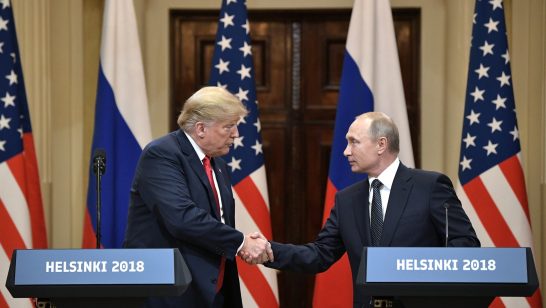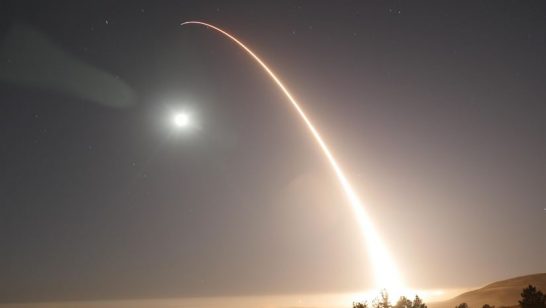
On February 2nd, the United States suspended its obligations under the Intermediate-Range Nuclear Forces (INF) Treaty. It submitted a formal notice of withdrawal that takes effect on August 2nd 2019 unless “Russia returns to full and verifiable compliance.” Russia responded in kind by also suspending the treaty. The culmination of a yearlong drama, beset with mutual accusations, now places Europeans under enormous pressure to address the ensuing security challenges. This must be handled deftly without provoking Moscow, whilst also attempting to rejuvenate an arms control regime that is seemingly moribund.
European NATO allies have already signaled that they “fully support” Washington’s decision. Yet because NATO only unanimously acknowledged the Russian violation in December 2018, collective work on threat assessments and possible responses is far from complete. Military options, diplomacy and arms control are all still on the table.
Military options
Technically, Europe has been in reach of a range of Russian conventional and nuclear missiles for years. These include Russian ship- and air-launched INF Treaty-range missiles not prohibited under the treaty. But it is much easier to quickly detect and trace a bulky ship than a mobile truck. If Russia proceeds with further deployments of the treaty-violating missiles, there will be less warning time for NATO countries within range.
Since the Russian missile is allegedly nuclear-capable, this generates additional concern and uncertainty, and – according to NATO Secretary General Jens Stoltenberg – reduces “the threshold for any potential use of nuclear weapons in a conflict.”
As a result, NATO has tasked its military commanders to assess the repercussions of a “no INF world”, determine where Russia will deploy the missiles and how best to respond. Potential responses will likely include yet another adjustment of NATO’s deterrence and defence posture following the measures it adopted after 2014 to manage the perceived growing Russian threat.
NATO needs to find the balance between credible deterrence and defence without unnecessarily escalating the situation. The Alliance may react by increasing the readiness levels of its defensive and offensive capabilities to deny any Russian advantage from the new missile deployments.
Worryingly, around October 2018, NATO’s Secretary General had stopped restating that NATO has no plans to deploy more nuclear missiles in Europe. This implies that all options are on the table. However this is likely to be negotiating tactic rather than a signal of intent, especially because US officials claim to have no current plans to deploy new missiles to Europe. Furthermore, a US response involving the deployment of a limited number of low-yield submarine-launched ballistic missiles, or nuclear-armed sea-launched cruise missiles (as announced in the 2018 Nuclear Posture Review) is simply not an option in the near-term. These systems do not exist, nor are funded yet. Moreover, deploying nuclear INF Treaty-range missiles in the European theater would require NATO consent which is improbable given the likely difficulty in achieving NATO consensus.
An American INF Treaty-range conventional missile is currently under R&D and may become an option if a NATO ally, or allies, agree to host it as part of a bilateral agreement with the US. This would deeply divide the alliance. Poland is regularly mentioned (unofficially) as a likely host country although this is denied by officials (here and here). As of today, no ally has agreed to host such a missile.
Diplomacy and arms control
The US ultimatum in December 2018 that Russia had 60 days to “get rid of” the missile, the launcher, or change the missiles range and allow for verification did not take into account the Russian perception of its own innocence or address its allegations of US violations. The ultimatum was therefore deemed to fail.
From the start, NATO European allies felt they had no right to interfere in a dispute they were not formally part of. In the end they backed US accusations against Russia and supported the US claim of being in compliance with the treaty. And yet, they could have used leverage as partners of NATO’s Ballistic Missile Defence system, to encourage Washington to agree to reciprocal inspections with Russia. This route would have included Russia displaying its missile, and the US opening up its ballistic missile defence site in Romania, which Moscow fears could be used to launch cruise missiles prohibited by the treaty. While such inspections would not clear all of the concerns once and for all, they would have provided the ground to explore a solution to maintaining the treaty.
And although a new European diplomatic effort, beyond political calls to save the INF Treaty, does not seem likely, it is still possible. The US government never publicly offered Russia an inspection of its Aegis Ashore site in Romania to counter the INF Treaty-related accusations. Most likely because it cannot make a convincing case on the technical specifications. European NATO member states should therefore offer Moscow technical monitoring and inspection rights to prove that no offensive missiles are deployed there, on the condition that Russia agrees to alleviate US/NATO concerns, starting with verifiably test-flying its missile. While it is highly improbable that the Romanian government will be at the forefront in offering mutual inspections to Russia, it is also unlikely that Bucharest will be willing to take some of the blame for letting a critical arms control treaty die.
President Putin’s claim that Russia will not deploy intermediate-range or shorter-range weapons until US weapons are deployed, would be welcome if it weren’t for the lack of credibility. Russia is said to have already deployed four battalions of its new missile and several other shorter-range systems in the vicinity of NATO’s border. However, because there is no appetite for a new arms competition, nor does NATO possess similar capabilities as of yet, a future diplomatic initiative should come from Europe with a NATO pledge not to deploy any, or at the very least no nuclear-tipped, INF-range missiles. If Russia would be willing to reciprocate, a verification regime could be established using existing and proven procedures.
Berlin is currently leading on an ambitious goal to reinvigorate arms control which has suffered several setbacks in recent years. But without sincere and active US participation, any German initiative may only reach as far as Russia will allow it to. Devising new arms control concepts that both Russia and the US will engage with is critical. There is a need for fresh thinking and Europe can help lead the way.
The opinions articulated above also do not necessarily reflect the position of the European Leadership Network or any of its members. The ELN’s aim is to encourage debates that will help develop Europe’s capacity to address pressing foreign, defence, and security challenge.



